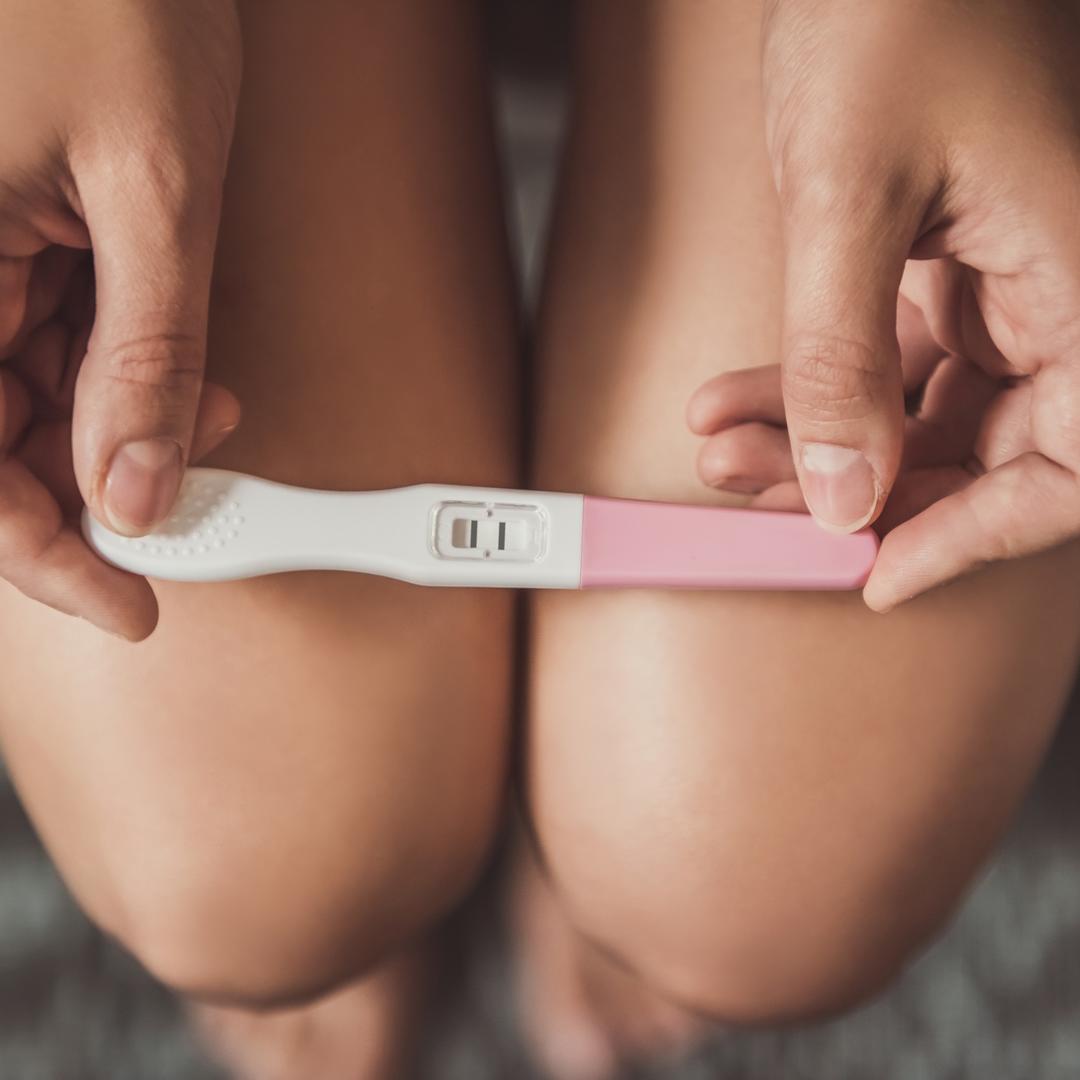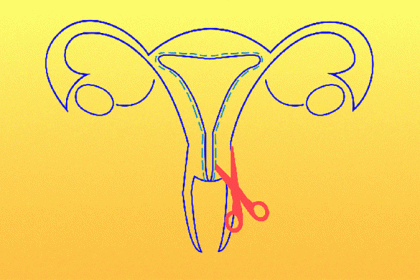Restrictive abortion laws in states across the South and Midwest threaten your right to choose. Here’s what they this mean for women considering parenthood.
By Tracy Collins Ortlieb
May 23, 2019
Robin Utz learned in November of 2016 that there was something wrong with her second-trimester pregnancy. Her baby, whom she named Grace, was conceived after multiple rounds of in-vitro fertilization and several miscarriages. But diagnosed with multicystic dysplastic kidney and given a zero percent chance of viability, Grace was terminated at 21 weeks and five days.
“Making it to birth—if she did—would have meant a very, very brief life of agony, and dying in our arms within minutes,” says Utz, a project manager in health care. “I thought, ‘What kind of life is that for Grace?’ And what if it compromised my ability to conceive again? I already felt so instinctively maternal toward her, and to bring her into the world only to have her suffer and die in my arms was completely inhumane to me.”
Utz lives in St. Louis, Missouri, one of the states that recently passed restrictive abortion laws. She finds them cruel to both the woman and fetus. “It’s certainly not going to make the lives of women suffering under these laws better or improve life for the unborn,” says Utz, who also shares her experience on her website DefendingGrace.
Last week, Missouri legislators passed a bill banning abortions after about eight weeks of pregnancy, with no exceptions for rape or incest. The decision came days after Alabama passed the most restrictive law in the nation: it effectively banned the majority of abortions, including those for victims of rape or incest. Weeks prior, Georgia joined five other states—Ohio, Mississippi, Kentucky, Iowa, and North Dakota—that have passed laws to ban abortions after six weeks of pregnancy, the time at which a doctor can typically detect a fetal heartbeat. (The Iowa and North Dakota laws were later struck down in court.)
Following the Supreme Court’s landmark 1973 Roe v. Wade decision, the current constitutional standard is that abortion is legal until a fetus could survive outside a woman’s womb—generally about 24 weeks into the pregnancy. “Heartbeat bills” ban all or most abortions once a heartbeat can be detected. They leave women with such a narrow window in which to confirm they are pregnant and have the procedure.
While these laws are not yet in effect and face numerous legal challenges, medical providers and women are already questioning what the rulings could mean for mothers and mothers-to-be.
How the abortion ban will impact mothers considering another pregnancy
In the U.S., nearly six in ten women having abortions are mothers. Women diagnosed with complications during a previous pregnancy are at significantly greater risk for those same complications with each subsequent pregnancy. These complications are often noted as maternal indications for considering abortion—meaning they include physical or mental disorders which may jeopardize the patient’s health during pregnancy. Under existing law, doctors and geneticists work together with the patient to predict the risk, diagnose issues, and determine if termination of the pregnancy is advised.
One example of a previous complication that could affect a future pregnancy is preeclampsia, a leading cause of both maternal and infant mortality worldwide, which has increased by 25 percent in the United States in the last 20 years. According to Kara Boeldt, founder of EndPreeclampsia, the latest abortion bans allow for termination with “reasonable medical judgment,” but fail to adequately define what that means. Previous conditions listed as maternal or fetal indications for considering abortion, like severe preeclampsia, may not qualify under these bills. If that is the case, women who become extremely ill during pregnancy because of severe preeclampsia may not have the option of a safe abortion.
“The Alabama bill and others like it could have a chilling effect on survivors of preeclampsia concerned about having subsequent children,” says Boeldt. “Women with a history of severe preeclampsia who know that they would have to become ill enough to qualify for the extremely limited ‘health’ exemptions written into these bills before being offered a life-saving abortion may decide that the risk is too great [to try to conceive again].”
Other women at risk for complications during a pregnancy are those who have recently given birth. Getting pregnant again too soon (typically less than a year after giving birth) increases the risk of adverse outcomes for both the woman and baby, particularly following a stillbirth, hemorrhage, or surgical birth. It’s recommended that mothers wait 18 to 24 months to safely start trying to conceive again. In these patients, an abortion may be necessary to prevent things like placental abruption, premature birth, and congenital disorders.
And then there are families who simply can’t afford to bring another child into the world. A 2016 report from the Guttmacher Institute found 75 precent of patients having abortions in 2014 were low-income. Many of them indicated “having a baby would interfere with their work, school, or ability to care for their other children.” In a nation where nearly 50 percent of pregnancies each year are unintentional and the average annual cost of raising a child is currently about $14,000, inability to access abortion threatens to trap these women and their families in compounding cycles of poverty.
How the abortion ban will impact pregnant women
Most women find out they’re pregnant between their fourth to seventh week of pregnancy—that can make some of them too late for a safe, legal abortion according to many of the new bills.
In the U.S., women die in pregnancy and labor more than any other country in the developed world. Of those 700 deaths annually, African Americans, American Indians, and Alaska Natives are nearly three times as likely as white women to die from a pregnancy-related cause. Access to a safe, legal abortion is life-saving for women during a high-risk pregnancy, which could otherwise cause maternal mortality.
Nearly 99 percent of abortions occur before 21 weeks. When one is needed later in pregnancy, it’s often because of a highly complex circumstance. Though each state ban allows for exceptions for serious risks to a woman’s health, none makes allowance for severe fetal anomalies.
Infections and complications that can seriously harm the life or fertility of the mother also fail to meet states’ criteria. One example: ectopic pregnancy, in which the fertilized egg implants in the fallopian tubes outside the uterus. In Ohio, a bill was introduced last month to require a procedure for an ectopic pregnancy “that is intended to reimplant the fertilized ovum into the pregnant woman’s uterus.” But that goes against science: according to the the American College of Obstetricians and Gynecologists(ACOG), “an ectopic pregnancy cannot move or be moved to the uterus, so it always requires treatment.” It’s generally a non-viable pregnancy that often puts the mother’s life at risk.
The bans may also put women experiencing a miscarriage at a higher risk of infection or even death. Last week, the Michigan house and senate passed a bill banning a procedure used for abortion called dilation and evacuation (D&E), which is similar to a dilation and curettage (D&C) but performed during the second trimester. Physicians, lawmakers said, are only allowed to perform it to save a woman’s life. Here’s the problem: a D&E is also used to help women who have had or are going through a miscarriage in their second trimester safely pass all of the tissue in the uterus. Studies reveal 15 to 20 percent of known pregnancies end in miscarriage. Without a D&E, some of these women are at a risk for blood clots and infection, putting their life or future fertility at risk.
While there is no mention in the Michigan bill of performing a D&E for miscarriage (as opposed to abortion), the ban could have repercussions. “For a woman who is dilated before 20 weeks, we call it an inevitable abortion,” says Edward Miller, M.D., a clinical fellow in maternal-fetal medicine at University of California, San Francisco Health. In those cases, doctors may recommend emptying the uterus to prevent pain and bleeding. “Our ability to perform this procedure under these bans may be compromised,” he says. There are situations, he adds, where a woman can be miscarrying and still have a detectable fetal heartbeat. While most women opt for aspiration or D&E (after 20 weeks), being compelled to endure the miscarriage until a fetal heartbeat is no longer detectable makes a woman vulnerable to bacterial infection, pain, and bleeding. He also points to the emotional ramifications of being legally forced to carry a dying fetus.
- RELATED: Top 7 Causes of Miscarriage
In the meantime, women in marginalized communities will be most profoundly impacted by such restrictive laws because access to necessary medical care may not be available or affordable, explains Kecia Gaither, M.D.
“Marginalized women may not have the resources to travel out of state for care,” says Dr. Gaither, a double board-certified physician in ob-gyn and maternal-fetal medicine and director of perinatal services at NYC Health + Hospitals/Lincoln in the Bronx, New York. “This represents an enormous problem to mothers, and to the children born, as well as a massive infrastructure problem in terms of the facilities that will be needed to care for these unwanted children and children with special needs. This also represents a hardship for any mother forced to bring forth a child and potentially take care of it.”
As Robin Utz put it, even in a state as conservative as Missouri, luck and privilege were on her side when it came to her daughter’s termination.
“I had a job that gave me time off, I didn’t have other children to care for, I had insurance coverage,” she says. “What if I didn’t have insurance or was working multiple jobs I couldn’t take time off from? What if I couldn’t find transportation or care for my children or just couldn’t afford it? The layers of privilege that played into my ability to give my daughter the gift of a peaceful passing are jaw-dropping. It was the heartbreak of my life, and yet we were still unbelievably lucky.”
How the abortion ban will impact the maternal death rate
Restricting access to safe, legal abortion doesn’t reduce the occurrence of abortions. Instead, it increases maternal morbidity “from botched abortions, from home abortions, from women using coat hangers or throwing themselves down stairs,” says Dr. Miller.
Only 1 in 4 abortions are performed safely in nations where abortions are banned or only allowed to save a woman’s life, according to a study by the World Health Organization and the Guttmacher Institute. And at least 22,800 women die from unsafe abortions annually.
“There’s such a problem of lack of accountability in lawmakers when making these sweeping decisions that affect more than 50 percent of our population,” says Dr. Miller. “They’ll never be the ones looking into the eyes of a women pregnant with a fetus with fatal anomalies, or who’s been raped or is carrying the product of incest and say that they have to carry that pregnancy to term. They’ll never tell it to her face—they’ll force the medical community to do it, and it’s unbelievably cowardly.”
- RELATED: Young Rape and Incest Victims Would Be Unable to Get Abortions Under Sweeping New Alabama Ban
How the abortion ban will impact healthcare providers
Dr. Miller regularly performs medically necessary pregnancy terminations. Reasons for those include a baby diagnosed with a lethal anomaly, the culling of a twin or multiple whose anomalies affect the survival rate of womb-mates, or maternal indications, including severe cardiac disease or a genetic disorder like Marfan syndrome. Dr. Miller notes he also performs abortions on women with aggressive cancer to avoid delaying treatment.
“From an access standpoint, more women are going to be hurt,” says Dr. Miller. “More providers are going to be forced to offer a reduced standard of care to patients who deserve the highest. And more providers, myself included, are going to be faced with some really hard decisions: do you honor the oath you took, or do you give into the threat of repercussions for doing the right thing?”
While no state has yet suggested prosecuting women for undergoing an abortion, Alabama’s bill would punish a doctor or abortion provider who performs the procedure with a Class A felony, punishable by life or 10 to 99 years in prison.
Dr. Gaither says she fears a “mass exodus” of providers from these states should the bills pass, resulting in even worse outcomes for pregnant women. “Providers won’t be available to care for these women already facing a dreadful rate of maternal mortality,” she adds.
Nonetheless, Dr. Miller is doing precisely the opposite: the bans inspired the San Franciscan to apply for a medical license in Alabama, his home state.
“I was born after the establishment of Roe v. Wade, so all I’ve known is an America with the presence of abortion rights,” he says. “The decision really shook me—these were rights I believed were innate and that every American had, but in reality, they have to be fought for and voiced.”SIGN UP




